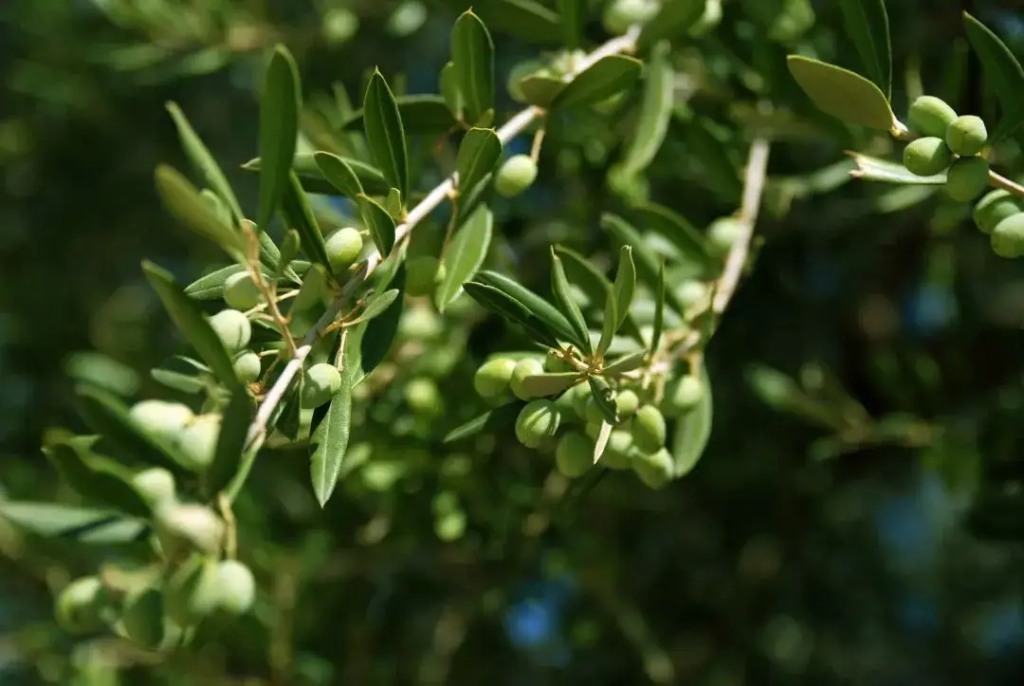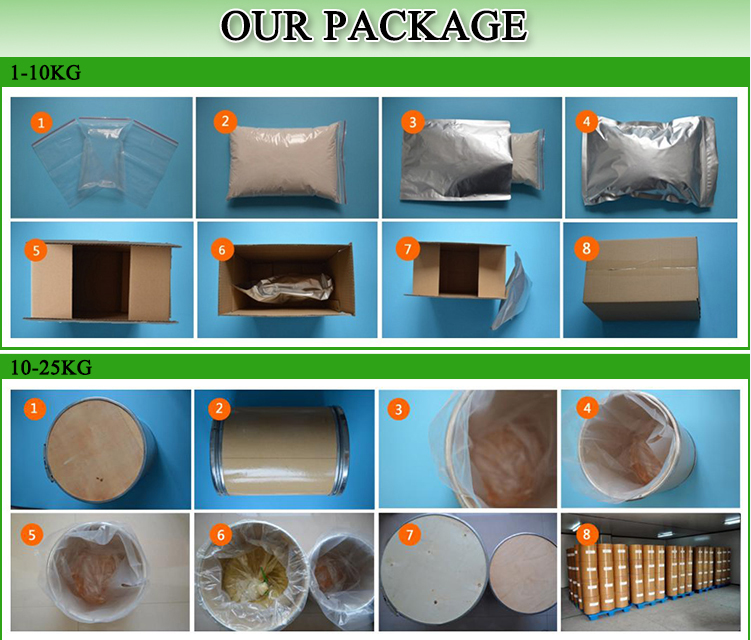1. PCR® Olea Europaea Leaf Extract Overview
PCR® Olea Europaea Leaf Extract is composed of olea europaea leaf and Hydroxypropyl Cyclodextrin. Olea europaea is mostly produced in the countries along the Mediterranean Sea in the south of Europe, and is a Mediterranean-type subtropical tree. Modern pharmacological studies have proved that olive leaf compounds such as Oleuropein, hydroxytyrosol (a degradation component of Oleuropein), lignans, flavonoids and others have anti-inflammatory and anti-bacterial, antioxidant, anti-viral, anti-tumour and blood glucose-lipid-lowering and other pharmacological activities. Oleuropein (OLE) is the highest active ingredient in olea europaea leaf extract. It is a bitter compound with strong antioxidant properties of antibacterial and anti-inflammatory. On the one hand, it promotes inflammatory response in the early stage of inflammation, inhibits the release of histamine, reduces the expression of inflammatory factors, and thus has anti-inflammatory effects. On the other hand, it inhibits inflammation in the late stage of inflammation, promotes cell proliferation, collagen synthesis, and cell growth. Moreover, oleuropein improves inflammation-induced redness, stimulated peeling, inflammatory acne, and post-inflammatory hyperpigmentation. Therefore, PCR® Olea Europaea Leaf Extract is a natural water-soluble cosmetic raw material with anti-inflammatory and anti-redness effects.

| Product Name | INCI Name | ||
| PCR® Olea Europaea Leaf Extract | OLEA EUROPAEA (OLIVE) LEAF EXTRACT
HYDROXYPROPYL CYCLODEXTRIN |
||
| Product ID | Specification | Minimal Package | Minimal Order Quality |
| PMQH02 | 40% Oleuropein | 1KG | 1KG |
2. PCR® Olea Europaea Leaf Extract Botanical Source
Olea europaea (Latin name: Olea europaea L), also known as wood rhinoceros olive, is a genus of wood rhinoceros olive in the family Lignaceae, mainly grows in the southern Mediterranean countries in Europe. It is a small evergreen tree and fruit species, and oil tea, oil palm, coconut, and is known as the world’s four major wood-based edible oilseed tree species. Olive oil is one of the most important parts of the “Mediterranean dietary pattern”. There is a wealth of epidemiological evidence that Mediterranean populations have lower rates of cardiovascular disease, skin cancer and colon cancer than the rest of the world. This health effect is not only attributable to the unsaturated fatty acids and vitamins in olive oil, but is also closely related to phenolic compounds. Studies have shown that the content of polyphenolic compounds in Olea europaea leaves is significantly higher than that in the fruit and bark. Olea europaea leaves are therefore a cheap and rich source of phenolic compounds. Plamed’s olea europaea leaves are from Longnan area of Gansu province.

3. PCR® Olea Europaea Leaf Extract Specification
| Product Name | Product ID |
| PCR® Olea Europaea Leaf Extract | PMQH02 |
| Actives content | 40% Oleuropein |
| Organoleptic | |
| Appearance | Powder |
| Color | Off-white to light yellow |
| Odor | Characteristic |
| Physical Characteristics | |
| Moisture | ≤10.0% |
| Ash | ≤7.0% |
| Heavy Metal | |
| Pb | ≤10ppm |
| As | ≤2ppm |
| Hg | ≤1ppm |
| Cd | ≤5ppm |
| Microbiological Test | |
| Total plate count | ≤1000cfu/g |
| Yeast & mould | ≤100cfu/g |
| Pseudomonas aeruginosa | Not detected |
| Staphylococcus aureus | Not detected |
| Heat-resistant escherichia coli | Not detected |
4. PCR® Olea Europaea Leaf Extract Effect
- Anti-inflammation
Hydroxytyrosol, a constituent of Olea europaea leaves, inhibits the expression of lipopolysaccharide-mediated inflammatory cytokines (TNF-α and IL-1β), thereby inhibiting the inducible nitric oxide synthase/nitric oxide and cyclooxygenase/prostaglandin E2 pathway. It has been found that hydroxytyrosol displays anti-inflammatory properties by inhibiting the activity and expression of the MMP-9 and COX-2 enzymes in activated human monocytes. The animal experiments have shown that it enhances anti-inflammatory effects by reducing the levels of the pro-inflammatory cytokines IL-6 and TNF-α [1]. The anti-inflammatory effects of olive leaf extracts were evaluated in vivo in a carrageenan-induced mouse paw oedema model, and the results showed that olea europaea extract reduced paw oedema in a dose-dependent way. And the results of the pharmacological tests indicated that Olea europaea leaf extract was safe and possessed strong anti-inflammatory activity. It can inhibit the formation of pro-inflammatory cytokines, which are important molecules involved in the inflammatory process [2]. Chen Wendong et al [3] studied the effect of olea europaea extract on capillary permeability and on ear swelling in mice:

The anti-inflammatory effect of Olea europaea leaf extract was determined by mouse capillary permeability test and mouse ear swelling test, and the permeability inhibition rate and mouse ear swelling inhibition rate were measured to evaluate its anti-inflammatory effect, respectively. The results showed that Olea europaea leaf extract had an inhibitory effect on the three validated models, and the anti-inflammatory effect was enhanced with the increase of the dose of the decoction of Olea europaea leaf extract. The inhibition rate of capillary permeability in the high dose group (2g/kg) of Olea europaea leaf extract decoction was 49.15%, the inhibition rate of mouse ear swelling was 53%, and the inhibition rate of mouse cotton ball granuloma hyperplasia was 55.27%, which were highly significant differences (P<0.01) compared with those of the blank control group and the positive control group, indicating that Olea europaea leaf extract had a better anti-inflammatory effect.
- Anti-oxidation
Olea europaea leaf extract has antioxidant properties. The formation of free radicals in cell growth is related to the metabolism of oxygen-demanding cells. The oxygen consumption inherent in cell growth leads to the production of a range of oxygen free radicals. The interaction of these substances with lipid molecules generates new free radicals: hydroperoxides and different peroxides. Whereas flavonoids, phenolics and oleuropein have been shown to have important antioxidant activity against these free radicals [4]. Phenolics reduce the production of reactive oxygen species (ROS) and have a significant scavenging effect [5]; oleuropein has been found to induce the Nrf2 transcription factor in endothelial progenitor cells, which in turn increases the level of HO-1 in these cells, protects EPCs from oxidative stress, and improves angiogenesis [6]. Hydroxytyrosol, a simple phenolic compound in olive, has good antioxidant activity, and its hydroxyl group has electron-donating ability in the neighbouring position, which can form stable hydrogen bonds with phenoxy groups, thus reducing the generation of free radicals [7]. Wang Bray et al [8] evaluated the in vitro antioxidant capacity of Olea europaea leaf extract by DPPH, hydroxyl radical and superoxide anion radical scavenging and Fe 2 + chelation assays. The results were as follows:

The results of in vitro antioxidant assay showed that Olea europaea leaf extract had high DPPH radical scavenging, hydroxyl radical scavenging, superoxide anion radical scavenging and ferrous ion chelating. The IC50 values were 0.522, 2.345, 1.934 and 3.420 mg /mL, respectively. Therefore, Olea europaea leaf extract has good antioxidant activity.
- Anti-bacterial
Luo Siyuan [9] et al. showed that hydroxytyrosol was able to affect the bacterial inhibitory activity of four test bacteria, Escherichia coli, Staphylococcus aureus, Pseudomonas aeruginosa, and Bacillus subtilis, resulting in minimum inhibitory concentrations of 0.625, 0.625, 1.250, and 2.500 mg/mL, respectively. Also, hydroxytyrosol affects the growth of the bacteria mainly in the logarithmic growth phase, presumably by affecting the integrity of the cell membrane, thus affecting bacterial viability. Wu Zunqiu et al [10] evaluated the bacteriostatic activity of oleuropein against Escherichia coli, Staphylococcus aureus and Bacillus subtilis by filter paper slide method:

The results showed that oleuropein had the best inhibitory activity against three types of bacteria in terms of the size of the inhibitory circle and the sensitivity of the bacteria as shown in above table. The results showed that oleuropein had the strongest inhibitory activity against Escherichia coli, followed by Staphylococcus aureus, and Bacillus subtilis showed little sensitivity. It is well known that phenolics or antioxidants inhibit bacterial growth by interacting with the peptidoglycan of the cell to destroy the cell wall structure or to damage the cell membrane. Staphylococcus aureus and Bacillus subtilis are Gram-positive bacteria, the cell wall structure of the bacterium is compact, as well as the strong resistance of the spores makes the effect of oleuropein on Bacillus subtilis weaker. This provides a reference for the application and research of oleuropein in the fields of food, cosmetics and medicine.
5. PCR® Olea Europaea Leaf Extract Technology
PCR® Olea europaea leaf extract utilizes supramolecular capture technology, which is an advanced active substance extraction system developed by Plamed. It not only protects the active substance from being damaged by acid and alkali, high temperature, sunlight and extraction chemical solvents, but also greatly improves the bioavailability of the active substance and prolongs the time of action.
6. Color Preserving Technique
- Discolouration
PCR® Olea Europaea Leaf Extract 1% aqueous solution starts to change colour in 2-5 days at room temperature, and black precipitate starts to form at the bottom of the test tube in about 10-20 days; the colour gradually deepens and the amount of precipitate increases with the prolongation of the time of storage; high temperature accelerates the change of colour and the production of precipitate.

In the above picture, the left one is the colour after 4 months of final discolouration, and the right one is the freshly prepared 1% PCR® Olea europaea leaf extract (i.e. before discolouration).
- Suggestion for colour preserving
Because PCR® Olea europaea leaf extract aqueous solution is easy to discolour and produce precipitation, Plamed found that adding appropriate amount of sodium bisulphite to PCR® Olea europaea leaf extract can protect the colour and stabilize the solution system. The amount to be added is: PCR® Olea europaea leaf extract powder: sodium bisulfite powder = 10 : (0.5~1).

In the above picture, the left one shows 1% PCR® Olea europaea leaf extract + 0.1% sodium bisulphite aqueous solution left at room temperature for 6 months, and the right one shows the newly prepared 1% PCR® Olea europaea leaf extract. It can be clearly found that there is no change in the colour of the solution after the addition of sodium bisulphite, and there is no any precipitation produced.
7. PCR® Olea Europaea Leaf Extract Advantages
- Active substance oleuropein≥ 40%;
- Light colour;
- 100% water soluble, clear and transparent without precipitation after dissolution.

8. PCR® Olea Europaea Leaf Extract Application & Dosage
| PCR® Olea Europaea Leaf Extract | Recommended dasage |
| Toner, lotion, essence, cream, serum | 0.1%~10% |
9. PCR® Olea Europaea Leaf Extract Safety
The International Catalogue of Chinese Cosmetic Raw Materials Standards in 2021 includes
OLEA EUROPAEA (OLIVE) LEAF EXTRACT.
10. Package and Storage
Package: Small amount is packed in aluminum foil bag, 1kg/bag.
In bulk is packed in 25kg paper drums with two plastic bags inside.
Storage: Stored in a cool and dry place and away from direct sunlight and oxidizing agents.

Plamed focuses on natural cosmetic ingredients for more than 10 years. We have founded four subsidiary companies, which respectively develops different kinds of cosmetic raw material. Plamed is a company whose CEO is designated as the first secretary general of Shaanxi Plant Extraction Association.
As a professional PCR® Olea Europaea Leaf Extract manufacturer, Plamed have been constantly upgrading the production process. We firmly believe that good PCR® Olea Europaea Leaf Extract and good PCR® Olea Europaea Leaf Extract price will help customers make good terminal products and help customers win a lasting and broad market.













